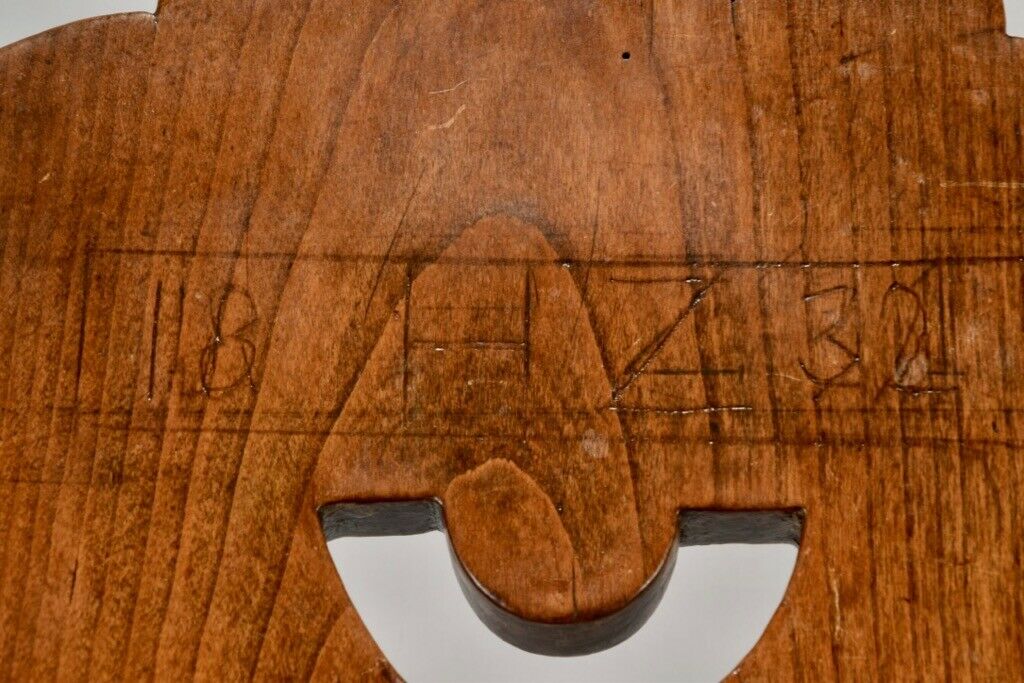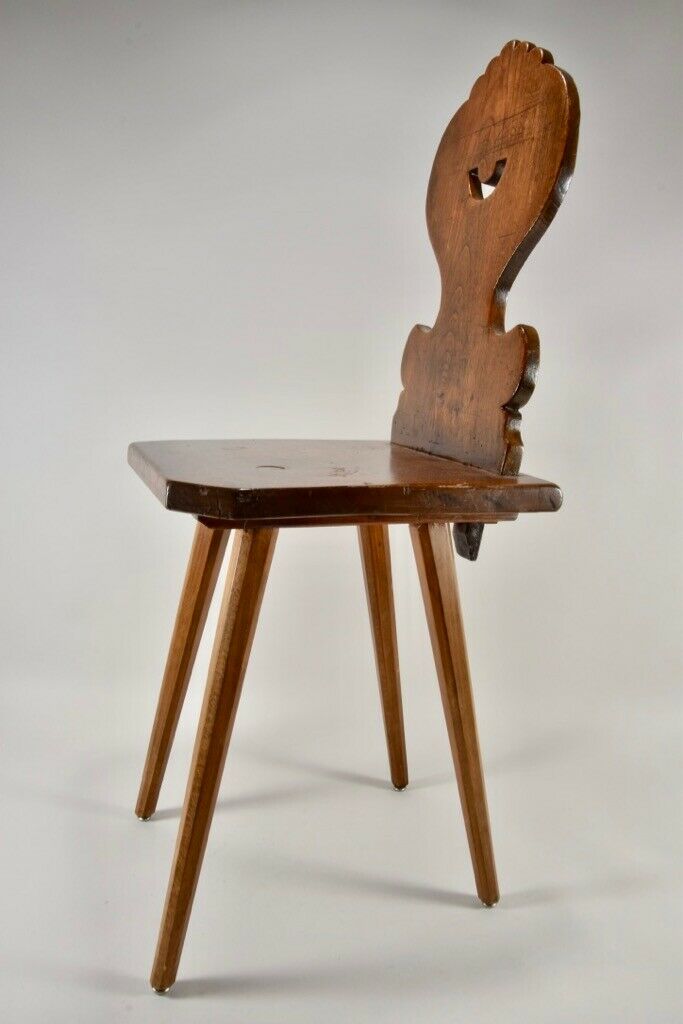I bought an antique German ‘Brettstuhl’ from 1832.
It is in great condition and only cost me 39,30€ shipped (I guess not a lot of people want to buy these?)
Though the traditional Brettstuhl style doesn’t speak to me as much as Welsh armchairs, I am still fascinated by this one.
What I particularly like about the chair is the carving in the back rest.

A Brettstuhl often has a hole in the shape of a heart carved in the back rest. The reason for this hole is to me unknown but it could be to hang the chair from a wall when it is not in use (I have come across a picture that shows this).
But this back is different, there is an abstract carving that to me looks like a half-open eye. This gives the chair a weird appearance (good weird). The chair is looking at you with one eye, how cool is that.

Dating the chair was easy as the maker put the year and his initials in the back rest. He was a better chairmaker than he was letter carver, but I think his messy carving only adds to the charm of the chair.

The wood used is oak for the back, cherry for the seat and beech for the legs.
The chair is constructed in the typical German way of adding cross battens to the seat using sliding dovetails for extra strength. The legs are then mortised through the batten and the seat, making a very solid construction. If the seat would split, the chair would still remain together because of this.


The legs taper in towards the floor, as is common in German chairs (as opposed to Welsh chairs that usually taper out to the floor).

There is one thing that puzzles me about the leg mortises visible from the top of the seat. Somehow there are larger holes surrounding the actual wedged legs. I don’t think it was a repair because it is present on all four legs in the same way. Perhaps the specialists can shed some light on this?

All in all I am very happy about my purchase and I will learn a lot from studying this real-life specimen that soon enough will celebrate its 200th birthday. It still sits excellent, nothing is wobbly or loose and it is in good enough shape to survive another 200 years
I am not sure if I will ever build a Brettstuhl myself but I will take a lot of inspiration from this chair.
Rudy Everts
I love those chairs, and have always wanted to build one. More for the fun of building it that the actual beauty (or lack of it) of the chair.
Could it be the legs are not original to the chair? Perhaps it used to sit too low, or they all broke or something. That could be a reason for the patches in the leg mortises, and also the reason the legs are in beech while the rest of the chair is in more expensive wood.
Good find!
LikeLiked by 1 person
Thanks for your comment, Brian! Interesting idea about the legs not being original. The bigger holes show no trace of wedges from a previous leg that would have been there. Also, the grain doesn’t appear to be end grain but long grain. I was thinking perhaps the maker scored the area where the leg mortise would go, to prevent blowout from the drill bit.
You can have a look at the chair when you are in Munich again! Mind you, the sitting experience is really quite like sitting on a plank, with a plank behind your back. Comfort? not a lot.
LikeLike
Good stuff!
LikeLike